Six villages in Tanzania are now participating in an important research project that could have profound implications for women’s health and the survival of forest ecosystems in developing countries.
Researchers are testing the viability of electric cooking powered by village minigrids in a collaboration that includes Modern Energy Cooking Services (MECS), funded by the UK Department for International Development (DFID), the German non-profit Access to Energy Institute (A2EI), mini-grid developer and HOMER Energy customer PowerGen, and technology non-profit Nexleaf Analytics. Although the research is still underway, results so far are promising.
Cooking with biomass is an enormous problem in developing countries. Indoor air pollution, caused by cooking with wood, charcoal, kerosene and coal, causes an estimated 4.3 million premature deaths annually, more than malaria, tuberculosis and HIV/AIDS combined.
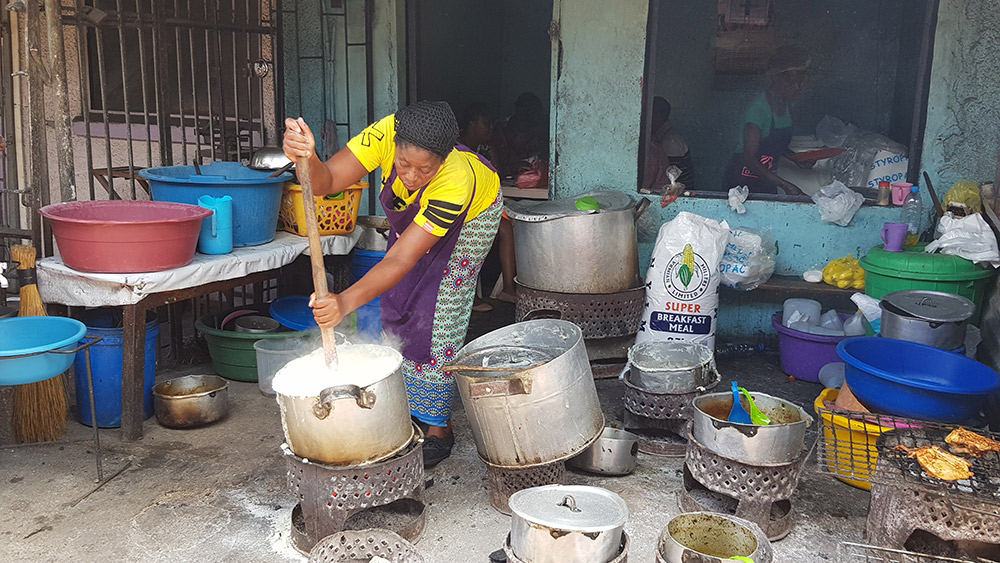
Biomass cooking is also damaging forest ecosystems and driving climate change. Approximately 275 million people live in deforestation ‘hotspots’ such as East Africa and South Asia, where unsustainable demand is driving fuel scarcity and high biofuel prices.
Nonetheless, three billion people – or 40 percent of the global population – are still dependent upon biomass for cooking and heating. Despite efforts by the UN and various multilateral agencies to address “dirty cooking,” the practice has stubbornly resisted reform efforts for a host of complex reasons that are at once technical, financial, political, social and cultural.

MECS Researcher Jon Leary says “Historically, clean cooking has not been viewed as profitable, because firewood has often been free. It hasn’t attracted investment or been a target for change. But now that many rural areas are urbanizing, people are losing access to free wood, and they are being forced to pay real money for fuel. While energy access and clean cooking have traditionally been viewed as two separate challenges, renewable energy microgrids are emerging as a potential solution to both problems.”
Simon Batchelor, MECS UK Research and Innovation Coordinator says “The next ten years will see significant investment in mini-grids as we try to reach the goal of affordable, reliable, sustainable, modern energy for all, but particularly for the 700 million people predicted to need off-grid solutions. The advent of eCooking with energy efficient appliances – like the electric pressure cooker (EPC) powered by clean energy – changes the landscape, enabling the enduring problem of biomass cooking to be addressed.”
A diverse team is implementing electric cooking research in Tanzania

For the current research project, 100 super-efficient electric pressure cookers (EPCs) have been distributed among six villages powered by hybrid renewable minigrids built by PowerGen. Some of the villages are on the mainland while others are on islands in Lake Victoria. A2EI is responsible for purchasing the EPCs, conducting preliminary training programs for the women who will be using them, and analyzing project data.
Ansila Kweka, A2EI manager for the Tanzania project, visited all the villages when the project was first launched and conducted training on eCooking. Data on cooking sessions – time and energy consumption – are sent to A2EI servers using smart meters that communicate every five minutes. Ansila says, “We are trying to measure how much energy people use for electric cooking and whether it is affordable. Are people willing to continue using EPCs permanently, and if they don’t want to, why?”
Energy access expert Anna Clements, who is Tanzania Link Researcher for the MECS program, will be carrying out the cultural and behavioral aspects of the study, analyzing whether Tanzanian women are willing to make the radical change from cooking over an open fire to preparing family meals in EPCs. Will they be able to continue making their favorite recipes? Can the electric pressure cookers do a good job with the most popular, locally available ingredients?
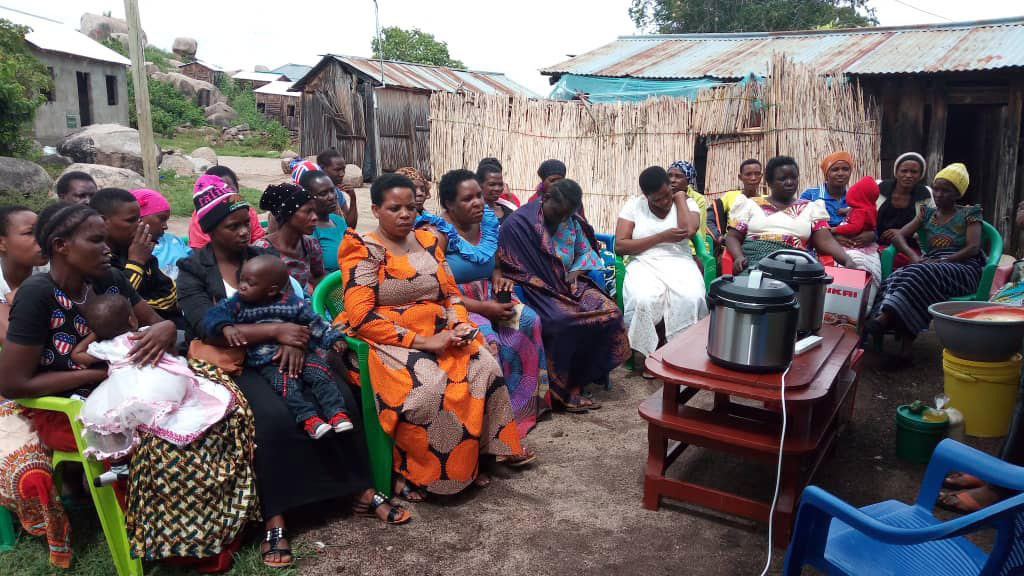
Electric pressure cookers (EPCs) are generally well-suited to East African cuisine. The foods EPCs cook best are the energy intensive ‘heavy foods,’ that are cooked slowly over relatively long periods:
- Beans
- Tripe
- Meat and vegetable stews
However, EPCs can also cook the major staples, including rice and ugali, a staple and African cousin of polenta, made with millet or corn.
Some recipes require a bit of adaptation, which is why EPC cookbooks are now popping up in Africa.
See the MECS eCookbook onlineAnna’s methodology is to collect detailed “cooking diaries” in two of the villages, which simply involves the cooks writing down what is cooked and how, to correlate with the energy consumption data. How much time do women spend cooking with wood or charcoal compared to electricity? What are the meals that they make every day? Do they use lids on the pots, and what other changes are they making as they transition to electric cooking? Information from the cooking diaries is supplemented by other data such as Nexleaf’s heat sensors that report when traditional biomass stoves are used, and A2Ei’s smart meters that measure electricity use by the electric pressure cookers.
PowerGen mini-grids provide electricity for the eCooking transition
Kevin Schreiber is responsible for Demand Stimulation and Productive Use at mini-grid developer PowerGen. PowerGen is now serving 10,000 rural customers in over 100 smart microgrids (known as minigrids in Africa) across Kenya and Tanzania. Schreiber says his mission is to increase uptake of appliances to drive demand for electricity, both to improve the company’s balance sheet and to deliver greater value to PowerGen’s end users. Kevin is also acutely aware of the health and climate benefits of electric cooking. PowerGen actually has electric cooking underway in eight Tanzanian mini-grids, although only six of them are participating in this study.
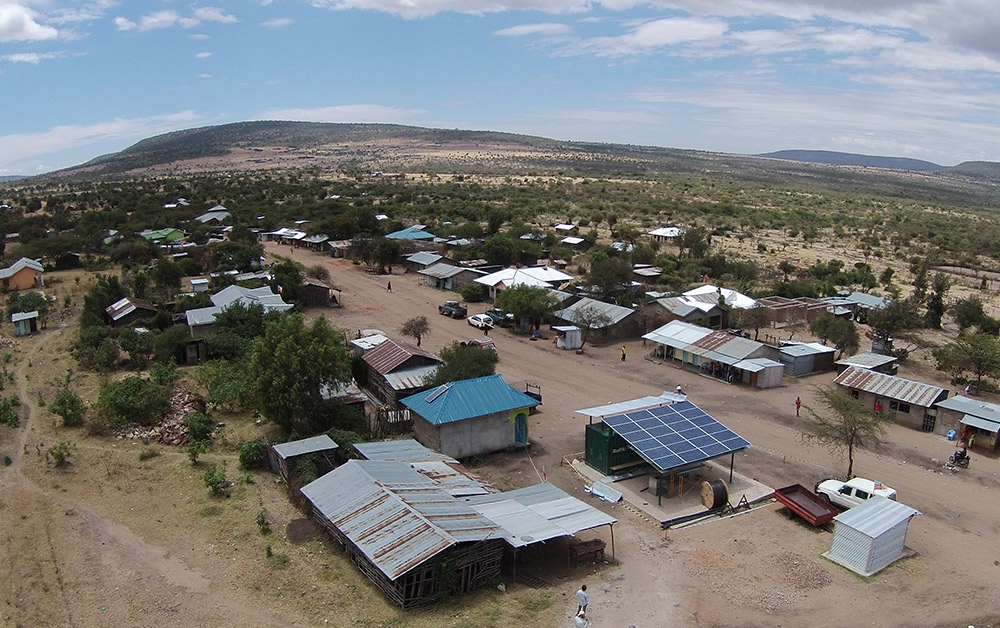
The PowerGen microgrids in Tanzania are all solar PV plus batteries with a backup generator. They range from small communities with a 6kW peak and about 100 connections, all the way to larger sites with 350 connections and a 25kW peak. All the sites provide 24/7 electricity, and Schreiber says that bigger systems are three-phase so they can handle power fluctuations better. While some of the newer sites have installed lithium-ion energy storage, there are others that still rely on lead acid batteries.
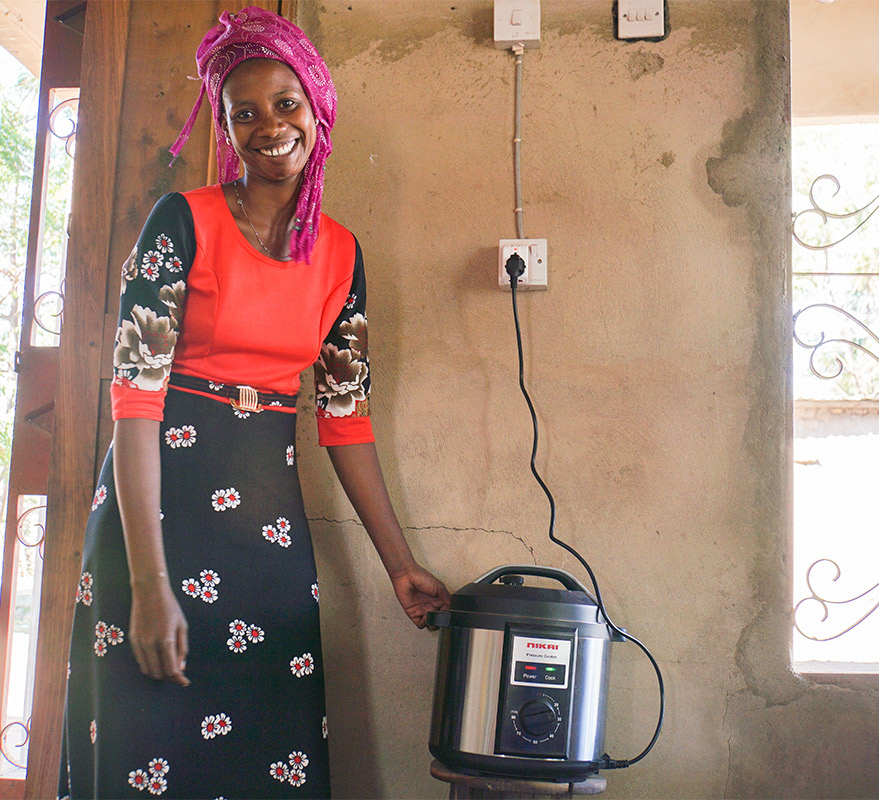
The company uses HOMER Pro to model their microgrids in the pre-feasibility phase. That way they can identify a system size that is appropriate for the load, reducing their financial risk and optimizing payback times.
However, Schreiber says that sometimes people don’t use as much electricity as anticipated, and mini-grid developers are always eager to promote activities that will drive electricity demand. With regards to the electric cooking research, he says “We’ve had some exciting results. Customers at the first two pilot sites were able to increase their consumption by about 20 percent in the first four months after receiving EPCs.”
While that does increase customers’ electric bills, the cooking project has intentionally targeted customers who were already paying as much or more for biomass as they do for electric cooking. This is possible because EPCs are extremely energy efficient and compatible with PowerGen minigrids off the shelf. Meanwhile PowerGen benefits from the additional revenues, so it’s a win-win economically.
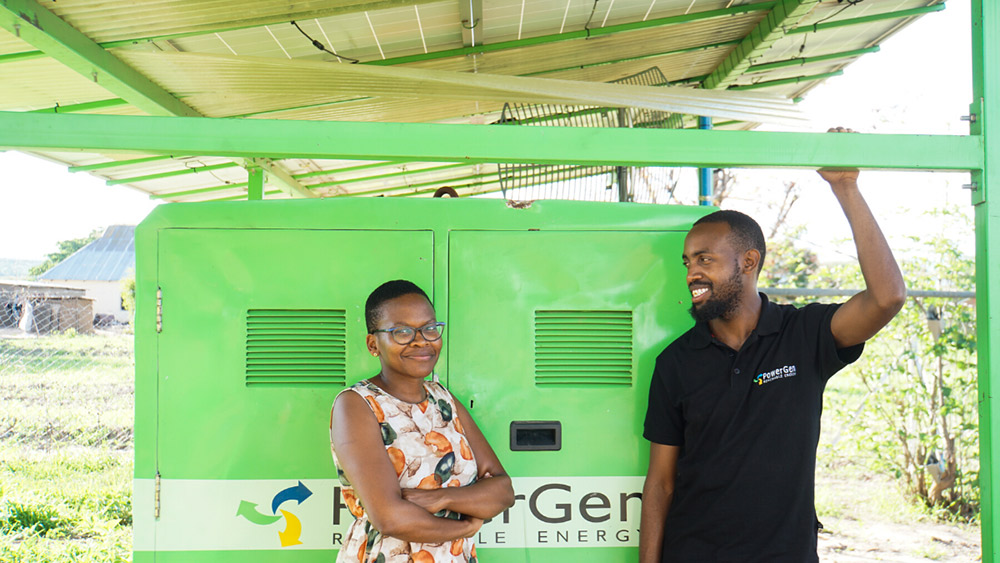
PowerGen also provides assistance for its customers to finance appliances. “We offer EPCs with nine-month financing plans after a 20% deposit,” Schreiber says, “so people pay under $10 a month, or $100 for an electric pressure cooker.” That can be a steep price for a family living in a remote African village, but it’s already becoming competitive with the cost of charcoal and firewood.
Jon Leary says it’s encouraging that new minigrids are handling the power demands of electric cooking so far without any problems. “There was previously a perception that electric cooking would use so much energy that it could never be affordable, or in some cases even be possible at all as it would surge at supper time and overload the system,” he says. “We’ve now seen that many of the new solar minigrids in East Africa are stronger than the national grid (especially in rural areas at the end of long and vulnerable distribution lines), and that many minigrid operators are eager to stimulate demand for electricity.”
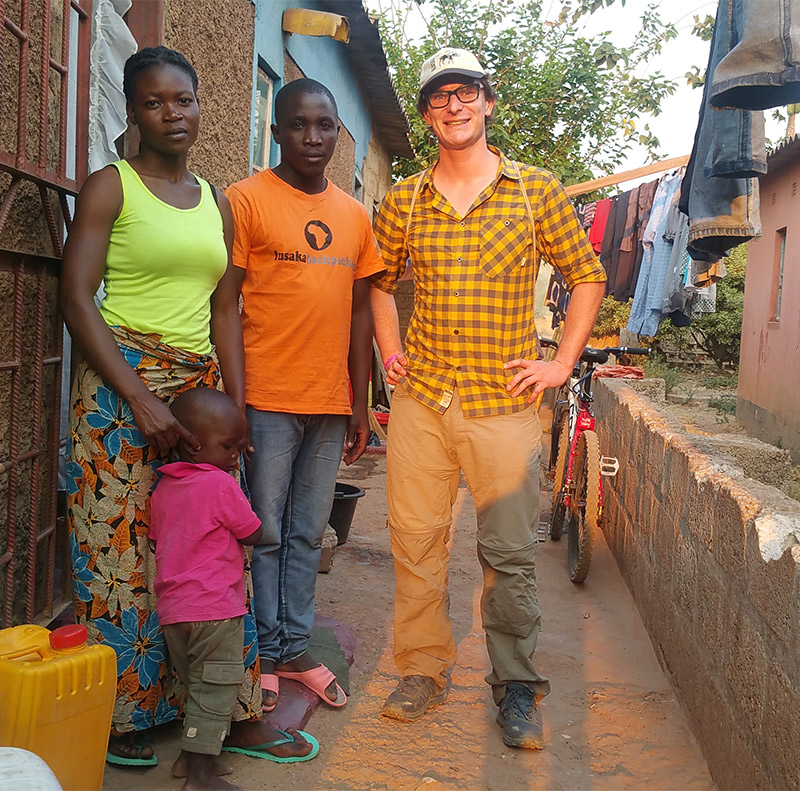
In fact, just a short time ago, electric hot plates were introduced as a potential solution, but their energy demand was way too high. Highly insulated EPCs on the other hand, switch off their power draw once pressure has been reached, and only switch on again intermittently when temperature and pressure start to drop in the pot. That saves electricity and reduces demands on a microgrid powering such devices. There have also been efforts to improve the efficiency of biomass cook stoves, but unfortunately these have not been shown to improve the health consequences of indoor cooking.
Will eCooking put an end to “time poverty” for women in developing countries?
Electric cooking could make enormous changes in women’s lives, reducing the amount of time spent in front of a stove each day from three hours to one. In many locations women have the added burden of gathering firewood and water, chores that can consume hours every day.
Anna Clements adds that “Cooks can now multi-task. They can put the pressure cooker on, then walk away from it and do something else. This is a luxury that was unheard of before.” Already, African women have identified time saving as one of the most important benefits of EPCs.

Ansila Kweka has also heard that women living at higher altitudes really appreciate electric cooking during the rainy season. Having no room to store dry firewood or charcoal in their impermanent dwellings they can still feed their families well if they have electric cookers.
On the negative side of the equation, Kweka reports that women are concerned about higher electricity bills and “also the fact that it’s hard to cook supper for a family of 10 in a single electric pressure cooker.” For those big families, the EPC is serving as a supplement to biomass fuels, she explains, so at least they are reducing charcoal and wood use.
eCooking can be successful if resources are dedicated
So far, several important trends have fortuitously converged to set the stage for electric cooking in developing countries. Reasonably priced renewable electricity, improvements to minigrids and smart meters, the development of super-efficient electric pressure cookers, and flexible financing for home appliances, are all driving factors.
Electric cooking provides hope for critical health improvements in the lives of women and children, who have borne the worst impacts of indoor air pollution; it also promises to relieve women of their most burdensome tasks, freeing them to pursue education and economic independence.
Simon Batchelor of MECS says eCooking researchers have taken to heart warnings from the International Energy Agency and the World Bank that a ‘business as usual’ approach will barely improve the situation. “Because of population growth, we could arrive at 2030 with the same number of people cooking on biomass,” he concludes. “However plans for renewable electrification and clean cooking are finally converging, and hopefully this approach will result in enough political will to muster the necessary resources to make significant change.”
Learn more: HOMER International Microgrid Conference
Learn more about the recent advances in microgrids for energy access at the 8th Annual HOMER International Microgrid Conference, Oct. 12-16, 2020. It is 100% virtual and free to attend. Register now.
Resources
- Clean Cooking: Why it Matters, World Bank
- The eCookBook, Modern Energy Cooking Services
- Electric Pressure Cooking: Accelerating Microgrid E-Cooking through Business & Delivery Model Innovations, Efficiency for Access Coalition
- eCook: What behavioural challenges await this potentially transformative concept? Ed Brown, Jon Leary
- Two Birds, One Stone—Reframing Cooking Energy Policies in Africa and Asia, Simon Batchelor et al
HOMER software delivers industry-leading system simulations, optimization, sensitivity analysis and best-in-class storage models across three categories of hybrid systems: islanded microgrids, grid-connected distributed generation, and front-of-the-meter utility-scale storage and hybrid systems.
Learn More
Visit UL Solutions HOMER® software to learn more about HOMER Pro, HOMER Grid and HOMER Front modeling and optimization software, download complimentary trials, sign up for training and explore our extensive knowledge base and other support documents.

Hi, really interesting project. I wonder, whether is it possible to shift the evening cooking time by few hours? Theoretically, it will save the cost of electricity a
nd may create win win situation for utility and customer.
Dear Bhupendra,
Thank you for your comment. This is certainly a very interesting idea. Although it is hard to change human behavior, many microgrid communities are exploring ways they can better understand the impacts of their energy consumption.
All the best,
Lili Francklyn
My name is Alex Zahnd and I co-founded RIDS-Nepal (www.rids-nepal.org) who partners with remote, high-altitude Himalayan villages in Nepal in developing and implementing long-term holistic community development projects. A key issue in any holistic community development project is access to improved energy services such as (but not exclusively) electricity. Cooking is done to 100% with firewood in these remote areas and thus I developed 20 years ago an efficient, smokeless metal stove, which consumes up to 60% less firewood (if used correct) for the families daily cooking and room heating. Now, in one village we developed a new, modular pico-hydro power plant, with sufficient power being generated to try and test electric cooking. I am VERY interested to get in touch with you to see if we can collaborate in the ecooking research program with you in this village to set an example in Nepal what is possible with a modular, pico-hydro power plant. I look very much forward to hearing from you ASAP.
Hi Alex,
Thank you so much for your comment. I will pass your information on to the eCooking researchers. They have also been interested in improved biomass stoves. However, there is some new research showing no improvement in the health outcomes that was hoped for with this technology. Hence there is a shift I think in the development community to exploring eCooking as an alternative. But, maybe smokeless stoves are a useful transition technology?
All the best,
Lili Francklyn
My name is Marcel from Rwanda Developing country. I work for Shyogwe Anglican Diocese and It is quite interesting to see how people from my village can save their lives and promote environment justice by using ecooking and stop relying on charcoal and woods for cooking. I wonder how can we work with you?
Dear Marcel,
Thank you very much for your comment. I will pass your name along to the eCooking research team from the UK. I know they are planning some additional research projects but I’m not sure if Rwanda is among them.
All the best,
Lili Francklyn